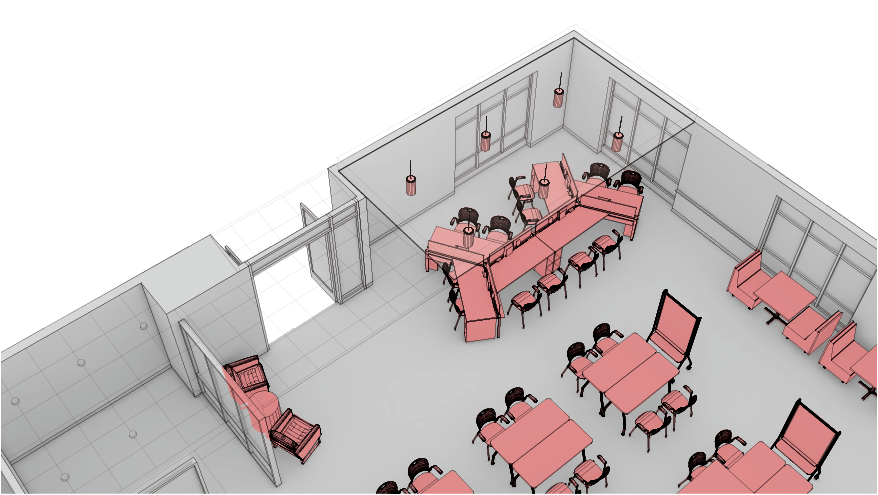Death of the Diagram?
The diagram expressing the ideas, where the photo-realistic rendering shares what the unbuilt space will look like.
With the large scale adoption of real-time render engines such as Twinmotion, Lumion, and Enscape it’s easier than ever to show a client what their space will really look like with a very high level of believability. Some of these software platforms even allow you to use your VR headset to more fully immerse yourself in the space.
It reminds me of this scene from Jurassic Park where Jeff Goldblum is the voice of reason (weird, right?).
“Your scientist were so preoccupied with whether or not they could, they didn’t stop to think if they should.” - Ian Malcom
So the parallel question is just because we CAN make something photo-realistic, SHOULD we?
Diagram = Idea
The purpose of the diagram is express a concept or an overarching idea. The purpose of the photorealistic rendering is to show the space that hasn’t yet been built. Whether the diagram is about the site, movement, or construction, it allows the viewer to have a deeper understanding of the intent. The diagram allows the designer to work through the essence of the project and express to their client, their team, and everyone the lens by which this project will be viewed.
I’m a huge proponent of the idea of showing information when the decision has been made and only show the information that you’re trying to convey. By sharing the photo-real too early in the process you run the risk (and it’s happened to me) of having a meeting being completely derailed because the rendering shows the wrong color carpet., instead of focusing on the overall space and feel of the space.






Experimentation in graphics
One of the great things about diagrams is that as the author of the drawing, you have the ability to craft and tone the drawing to match the style you’re looking to convey. This has the ability to be very simple (as represented by Bjarke and the team at BIG) or terribly complex. In a photo-realistic rendering this opportunity is greatly diminished if it’s available at all. By definition, the goal is to match reality, which is a pretty tall task!
The ability to define the lens by which your ideas are presented give you a tremendous opportunity that becomes it’s own design opportunity! Through diagramming, you have the ability to mix and match various graphic presentation techniques. This type of experimentation creates a much deeper understanding of the project and breeds new opportunities.
Images created while at Bialosky Cleveland
Every tool has it’s right use
Now you may think that I’m anti-photo-real, but I’m not. Honestly, from the first time I saw Pixar’s Toy Story, I was intrigued with how the computer could generate the feeling of space and place. I started working with 3D Studio Max version 3.0 right around 2000 or 2001. In graduate school, I taught a course on rendering and graphics and created a number of blog posts based on them. Even the first few years of my professional life, I pushed toward the photo-real. As I’ve gotten older (not wiser), I have seen designers - really talented designers - fall into the trap of jumping to the end product before fully working through the design intent and the narrative of the project. Even Bob Borson posted on Life of an Architect this week about renderings within his workflow. In the correct situation, I have no issue using a photo-realistic rendering or even hiring out to a team like DBox, The Boundary, Darc Studio, and Mir which are some of the best architectural visualization artists in the world.
I firmly believe that as designers we have a plethora of tools available to us…it’s our responsibility to use the most appropriate tool for stage of the project and the intent of the discussion. If you’re working with a developer to pre-sell a few townhomes before construction, photo-real is the way to do it! If you’re trying to help an institutional or non-profit client fundraise for a project and want to show potential donors what their donations will help fund, photo-real it up! However, if you’re still working through a concept and want to help someone understand the big moves you’re trying to achieve, a simple diagram goes a long way!
Diagram from Axi:Ome llc



